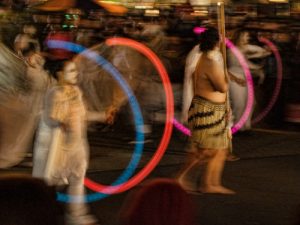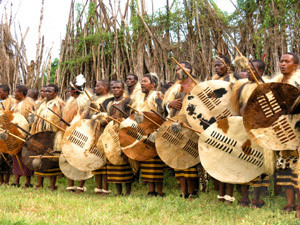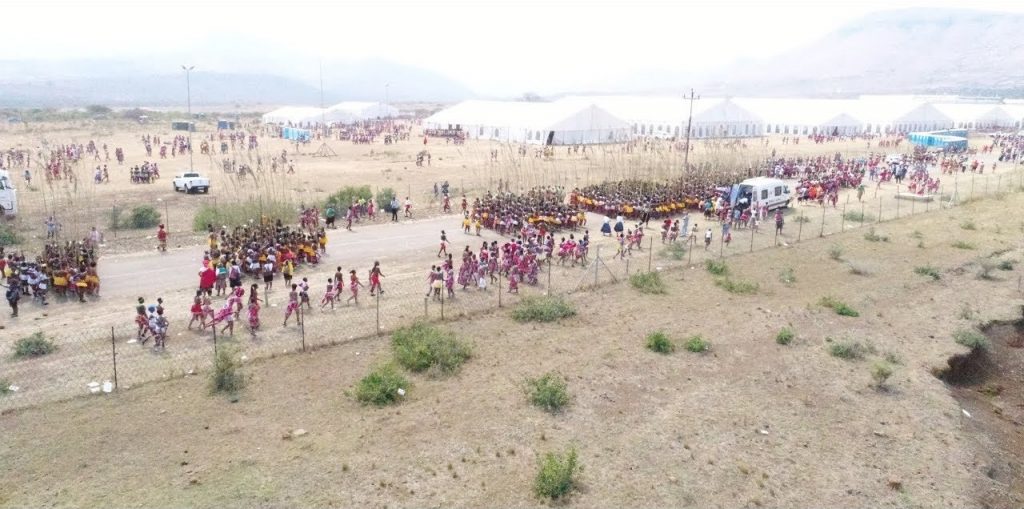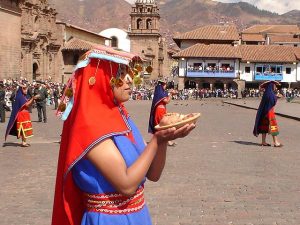
No, really: for half the earth, the Winter Solstice will begin June 21, 09:13 UTC (Coordinated Universal Time). The winter solstice marks the beginning of the return of the sun as the days get progressively longer again—and that’s always worth celebrating! Ceremonies and rituals include purification, ritual sacrifice, dancing, and sometimes gift-giving.
Oceania
The Australian Aboriginal community is thought to have been the first to celebrate the winter solstice, starting as much as 65,000 years ago. About 11,000 years ago, humans in Wathaurong created the Wurdi Youang rock formation, which maps sun positions on the Equinoxes and the Summer and Winter Solstices.

For a chilly celebration, Australians join the nude solstice swim in Canberra’s Lake Burley Griffin. Participants strip down and enjoy (?) a swim in waters where temperatures are below zero-degrees. (A cold front in Canberra has caused exceptionally cold temperatures this year, making that nude dip extra refreshing!)
Elsewhere in the region, people in Tasmania celebrate for weeks, from 6 to 23 June this year. In Hobart, the capital city, the Dark Mofo Festival includes music and theater performances, art exhibits, and more.
In New Zealand’s Māori tradition, the Matariki celebration commemorates and signals the triumph of light over darkness. Events often take place at Aotearoa Stonehenge, a modern adaptation of Britain’s Stonehenge. This year, New Zealanders will celebrate Matariki as an official public holiday for the first time, following Māori customs of remembering the dead and celebrating the living.
Africa

(photo by AfricanObserver)
The Eswatini of Swaziland mark the Winter Solstice with a six-day celebration of kingship called Incwala. Young men, at the direction of the king, cut branches of the lusekwane and imbondvo shrubs, which elders use to build a sanctuary hut for the king.
After days of dancing, feasting, and feats of prowess, the entire community spends a day in fasting and abstinence, including foregoing wearing jewelry, bathing, shaking hands, and sitting on chairs or mats. The elders and the king burn sacrificial objects to symbolize the ending of the old year. The king then remains in seclusion and abstinence for a month.
The Zulu celebration Umkhosi Wokweshwama (“First Fruits“) focuses more directly on the harvest. The king tastes the fruits brought from all over the country and then smashes a calabash to invite everyone to join him in feasting. Harvesting or eating before the king is a sign of disrespect. Young men of the king’s retinue sacrifice a black bull, killing it without any weapons.
British colonial authorities outlawed the Umkhosi Wokweshwama, but King Goodwill Zwelithini kaBhekuzulu revived the festival in 1990.
South America
Incan Empire Winter Solstice traditions are still celebrated throughout much of eastern South America. Inti Raymi (“Festival of the Sun God Inti“) festivals occur annually in Ecuador, Peru, Bolivia, Chile, and Argentina.
One of the biggest Inti Raymi celebrations takes place in Cusco, the historic capital of the Inca Empire, in modern-day Peru. The festival begins with a reenactment of appeasing Inti in the center of Cusco.
Historically, the Incas fasted for three days before the solstice. Before dawn on the fourth day, they went to a ceremonial plaza and waited for the sunrise. When it appeared, they crouched down before it, offering golden cups of chicha (a sacred beer made from fermented corn). Animals—including llamas—were sacrificed during the ceremony, and the Incas used a mirror to focus the sun’s rays and kindle a fire.
After the recreation of the ancient sacrificial rites, the modern celebration continues into the city where dancers dressed in colorful traditional attire march through the narrow streets and plazas. Festivities last for days and concerts continue late into the winter night.
The Ingapirca complex is the largest set of Inca ruins in Ecuador. Here, ceremonies begin as the rising sun shines through the doorway to the Temple of the Sun. Each year nearly 10,000 visitors travel to Ingapirca to witness the coming of the new agricultural year and join the festival.
In Ecuador, ritual purification in springs and rivers is an important component of the Inti Raymi celebration. It is believed to revitalize spiritual energy and their relationship with Pachamama. Members of the indigenous community in Otavalo begin the festivities with a spiritual renewal at the nearby waterfalls at midnight. The celebrations continue with a grand march into the main plaza where members of the community and visitors sing and dance for several days.
In Bolivia, northern Chile, and southern Peru, the winter solstice (Willkakuti) marks the New Year for the Aymara People and is a time to celebrate and bless the land for bountiful harvests. More than thirty thousand people gather every year to welcome the sun at dawn. This June 2022 marks the 5,530th year of the Aymara culture.
At Tiahuanaco, in Bolivia, ceremonies start the day before the Solstice, when pilgrims travel to Quimsa Chata and Aymara priests make offerings to Pachamama, the Earth Goddess. On the as the first rays of sunlight pass through the Sun Gate to the east of the Temple of Kalasaya, celebrants raise their hands to the dawning rays.
Celebrants offer food and other sacrifices to Inti and Pachamama to bring fertility and prosperity during the start of the new agricultural period. Festivities continue throughout the night, with lots of dancing, eating, and drinking of a warm grape liquor known as signani to stay warm.
Antarctica
Even Antarctica gets its share of solstice celebration, thanks to the researchers staying there over the long, dangerously cold season. While the Northern Hemisphere is enjoying the most daylight hours, in the Southern Hemisphere they are celebrating Midwinter. Festivities include special meals, films, and sometimes even handmade gifts.

Bottom Line: Since ancient times, people all over the world have recognized the winter solstice as an important annual occurrence and have celebrated the subsequent “return” of the sun in a variety of ways.









